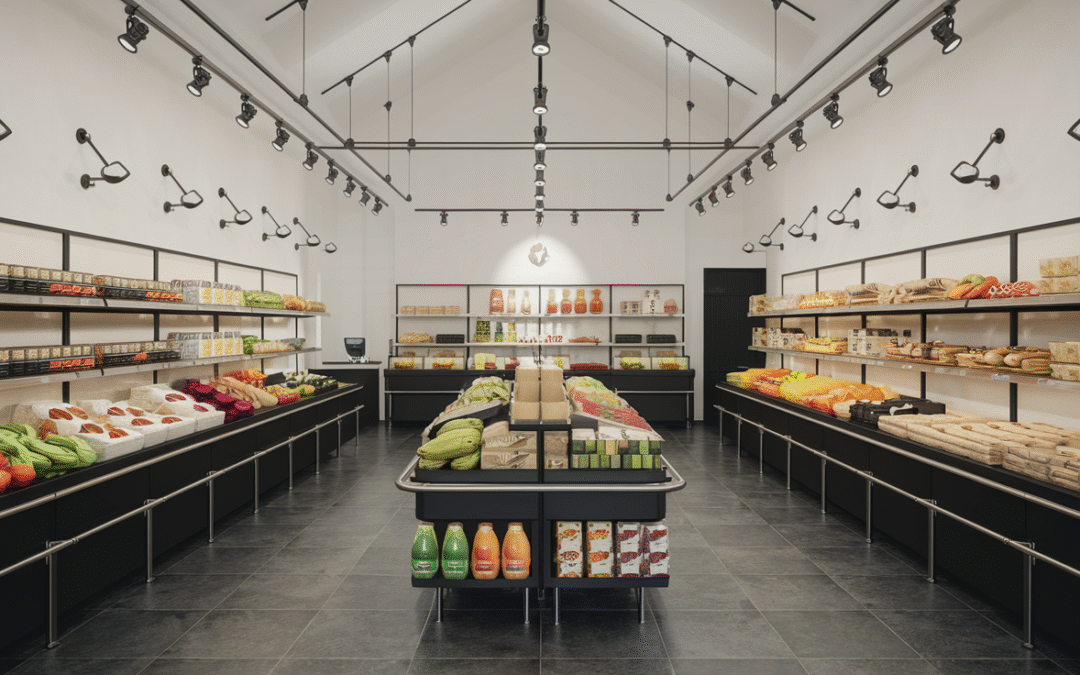Bay Area Grocery Store Design Trends for 2025
The Bay Area is a hub of innovation and sustainability, which means the region’s grocery stores are no exception to evolving design trends. For property developers, investors, and commercial tenants aiming to improve or establish a grocery store presence in this vibrant locale, understanding the future of grocery store design is crucial. This article delves into Bay Area grocery store design trends for 2025, focusing on practical, customer-centric solutions that ensure your project stands out. Whether you’re navigating through planning permits, selecting vendors, or optimizing construction timelines, these insights will guide decision-makers towards achieving successful outcomes.
Table of Contents
- Sustainable Design Solutions
- Customer-Centric Store Layouts
- Technology Integration
- Supplier and Vendor Relations
- Navigating Permitting and Approvals
- Conclusion
- Get Started with iBuild
Sustainable Design Solutions
As environmental awareness increases, adopting sustainable design solutions is more important than ever for Bay Area grocery stores. This trend not only addresses ecological responsibility but also enhances brand reputation and decreases operational costs.
Eco-Friendly Materials
Incorporating eco-friendly materials such as reclaimed wood, recycled steel, and low-emission paints is vital. These choices align with consumer expectations and local regulations, making them an integral part of contemporary grocery store design.
Energy-Efficient Systems
Implementing advanced HVAC and refrigeration systems that reduce energy consumption is a key trend. Smart lighting solutions, such as LED with daylight sensors, lower electricity usage and create more pleasant shopping environments.
Real-World Example
A leading grocery chain implemented a rooftop solar system as part of their store renovation with the help of iBuild Design and Construction. The system offset their energy use by 30%, showcasing a commitment to sustainability while significantly reducing overhead costs.
Customer-Centric Store Layouts
Maximizing customer experience through intuitive store layouts will help elevate the competitive edge for grocery stores in the Bay Area. Designs must focus on creating engaging and hassle-free shopping trips.
Flexible Aisle Configurations
Designing flexible aisle configurations that can be easily adjusted for seasonal changes or promotional events helps keep the store dynamic and engaging for customers.
Experience-Driven Zones
Creating zones within the store that focus on experiential shopping, such as tasting stations or cooking demos, can increase dwell time and enhance customer satisfaction.
Technology Integration
Integrating technology into grocery store design can significantly enhance operational efficiency and shopper satisfaction. This trend is crucial in staying competitive in the tech-savvy Bay Area market.
Smart Shelving and Inventory
Using smart shelving systems equipped with sensors can streamline inventory management, ensuring products are always available while reducing waste.
Contactless Checkout Solutions
Installing contactless checkout solutions caters to the growing demand for convenience and speed in shopping, particularly in a post-pandemic landscape.
Supplier and Vendor Relations
Establishing solid supplier and vendor relationships is pivotal for the seamless operation of grocery stores. Leveraging these partnerships enhances supply chain efficiency and product availability.
Collaborative Planning
Collaborating with vendors during the design phase allows for the incorporation of specialized equipment needs and merchandising strategies, thus ensuring that operational demands are met once the store is operational.
Long-term Partnerships
Building long-term partnerships with suppliers fosters reliability and trust, which are essential for continuous product supply and innovation adaptation.
Navigating Permitting and Approvals
Understanding the permitting process is vital for avoiding delays in project timelines. With iBuild Design and Construction, navigating local zoning, compliance, and building approvals becomes a streamlined process.
Local Know-how
Having local insights and expertise in Bay Area regulations allows for better preparedness and quicker permit acquisition, keeping construction phases on schedule.
Customized Support
iBuild provides tailored feasibility studies and compliance navigations to eliminate guesswork and lead to successful permit acquisitions.
For more in-depth insights into iBuild’s services, visit their services page.
Conclusion
Bay Area grocery store design trends for 2025 emphasize sustainability, customer-centric layouts, technological advancements, and strong vendor relationships. By adopting these approaches, property developers and investors can craft grocery environments that are not only functional but also memorable. With iBuild Design and Construction’s comprehensive services, from design to permitting, the pathway to creating next-generation grocery stores is clearer and more achievable than ever.
Get Started with iBuild
Eager to elevate your grocery store project in the Bay Area? Partner with iBuild Design and Construction today and harness their architect-led design-build services to bring your vision to life with precision and quality.

